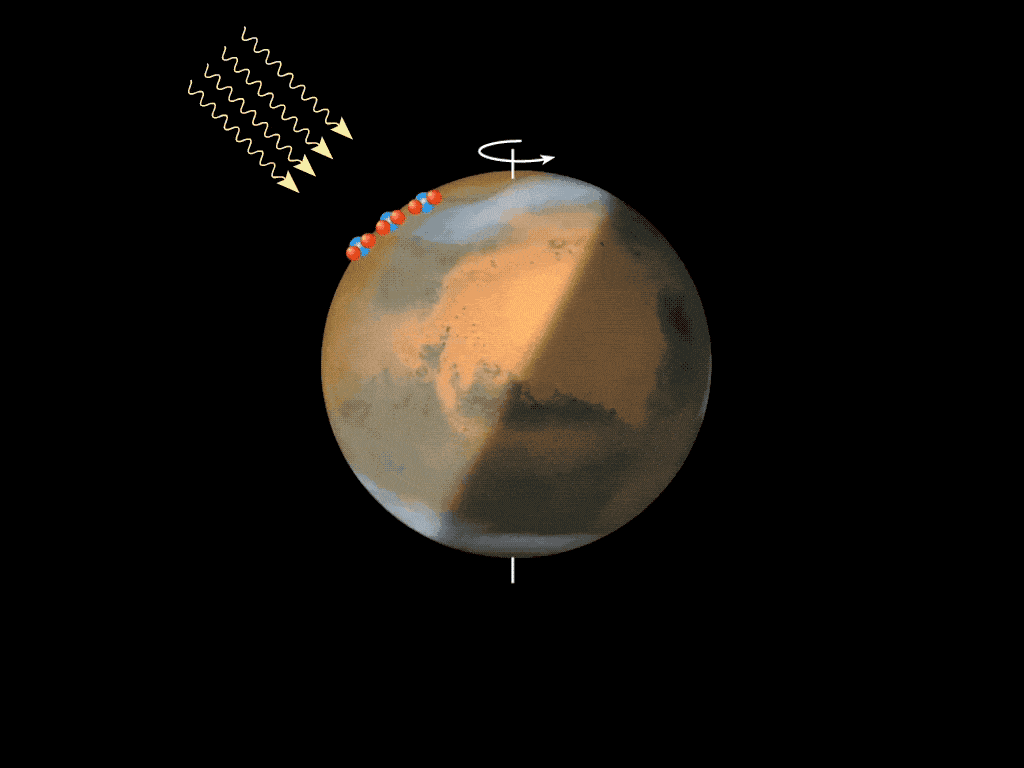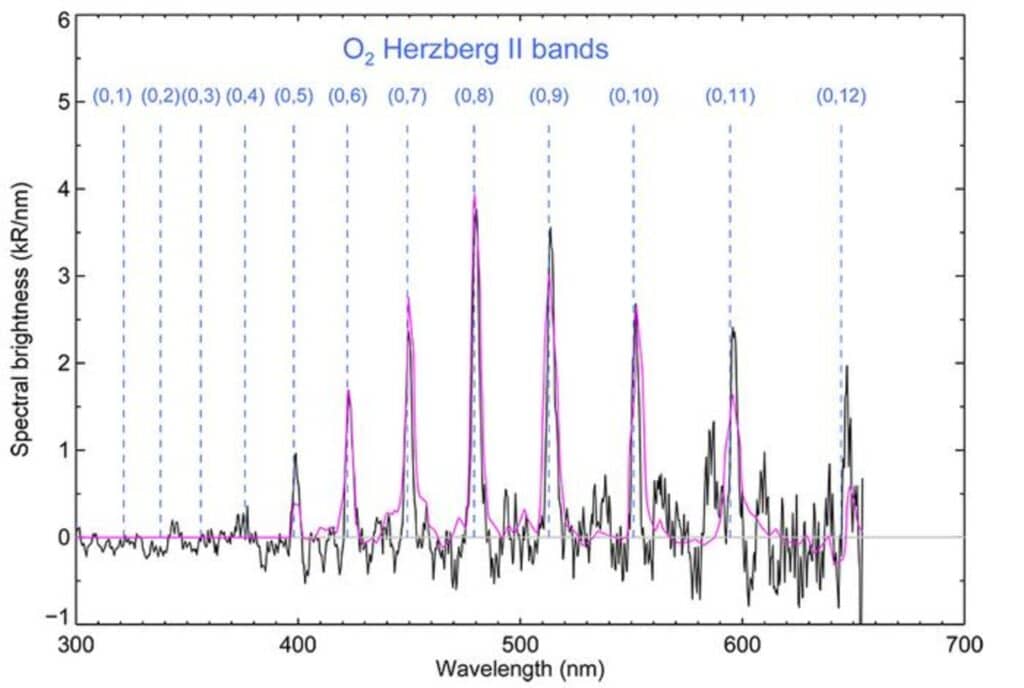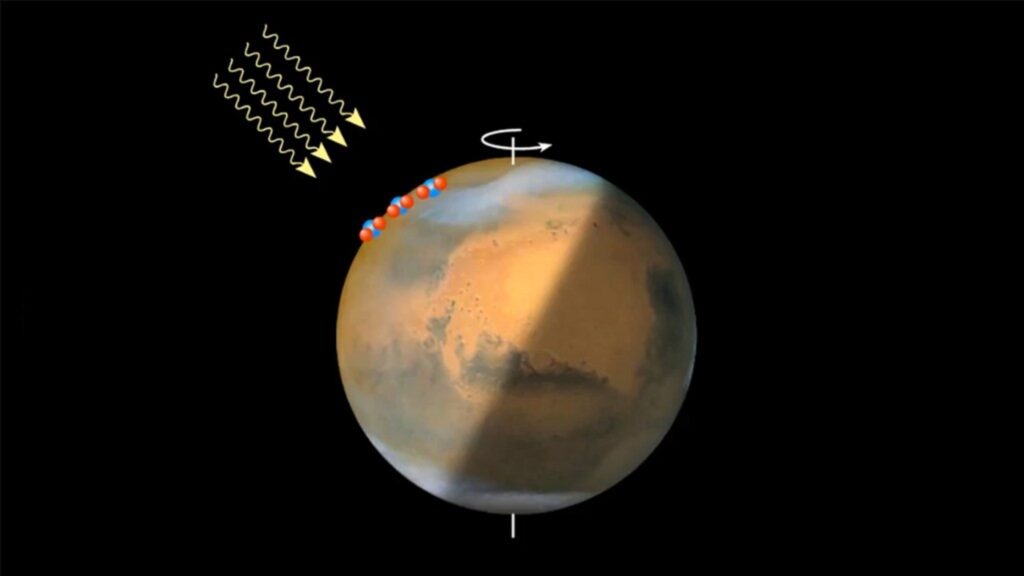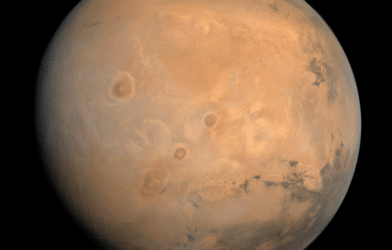What’s that glowing on Mars? For the very first time, scientists observed luminous glows on the night side of the Red Planet in the visible spectrum. These stunning observations are providing new insights into the dynamics of Mars’ upper atmosphere and its seasonal variations.
Researchers from the University of Liège utilized the UVIS-NOMAD instrument, which is onboard the Trace Gas Orbiter (TGO) satellite of the European Space Agency (ESA), to make these unprecedented inspections. The UVIS-NOMAD instrument, initially designed to study the ozone layer around Mars in the ultraviolet spectrum, covers a broad spectral range, from near-ultraviolet to red. However, in this instance, the instrument was oriented toward the edge of Mars rather than its center to observe the planet’s atmosphere from a unique perspective.
“Back in 2020, we were already able to detect the presence of a green emission between 40 and 150 kilometers in altitude, present during the Martian day,” says Jean-Claude Gérard, planetologist at the University of Liège, in a university release. “This was due to the dissociation of the CO2 molecule, the main constituent of the atmosphere, by ultraviolet solar radiation.”
The TGO satellite, while observing Mars’ atmosphere at night, detected a new emission between altitudes of 40 and 70 kilometers.

“This emission is due to the recombination of oxygen atoms created in the summer atmosphere and carried by the winds towards the high winter latitudes,” explains Lauriane Soret, a researcher at LPAP. “There, the atoms recombine on contact with CO2 to reform an O2 molecule in an excited state that relaxes and emits light in the visible range.”
Remarkably, this light emission is concentrated in the polar regions to the north and south of Mars. Here, oxygen atoms converge from the opposite hemisphere, creating a dazzling display. The intensity of this emission is particularly high in the visible range, and the phenomenon reverses every half Martian year, changing hemisphere.
The same team had previously observed a similar emission on Venus using images from the Venus Express satellite, where oxygen atoms travel from the sunlit side to the dark side, emitting a glow similar to that now observed on Mars.

LPAP researchers played a pivotal role in these discoveries, identifying the night-time emission after earlier observations highlighted the presence of a green light layer enveloping Mars on the day side. The team plans to continue its investigations during the TGO mission, which will provide valuable insights into Mars’ upper atmosphere and its seasonal fluctuations.
“The intensity of the night glow in the polar regions is such that simple and relatively inexpensive instruments in Martian orbit could map and monitor atmospheric flows,” says Gérard. “A future ESA mission could carry a camera for global imaging. In addition, the emission is sufficiently intense to be observable during the polar night by future astronauts in orbit or from the Martian ground.”
Benoit Hubert, a researcher at LPAP, underscored the significance of these remote sensing observations. “Remote sensing of these emissions is an excellent tool for probing the composition and dynamics of Mars’ upper atmosphere between 40 and 80 kilometers,” notes Hubert. “This region is inaccessible to direct methods of measuring composition using satellites.”
The study is published in the journal Nature Astronomy.












